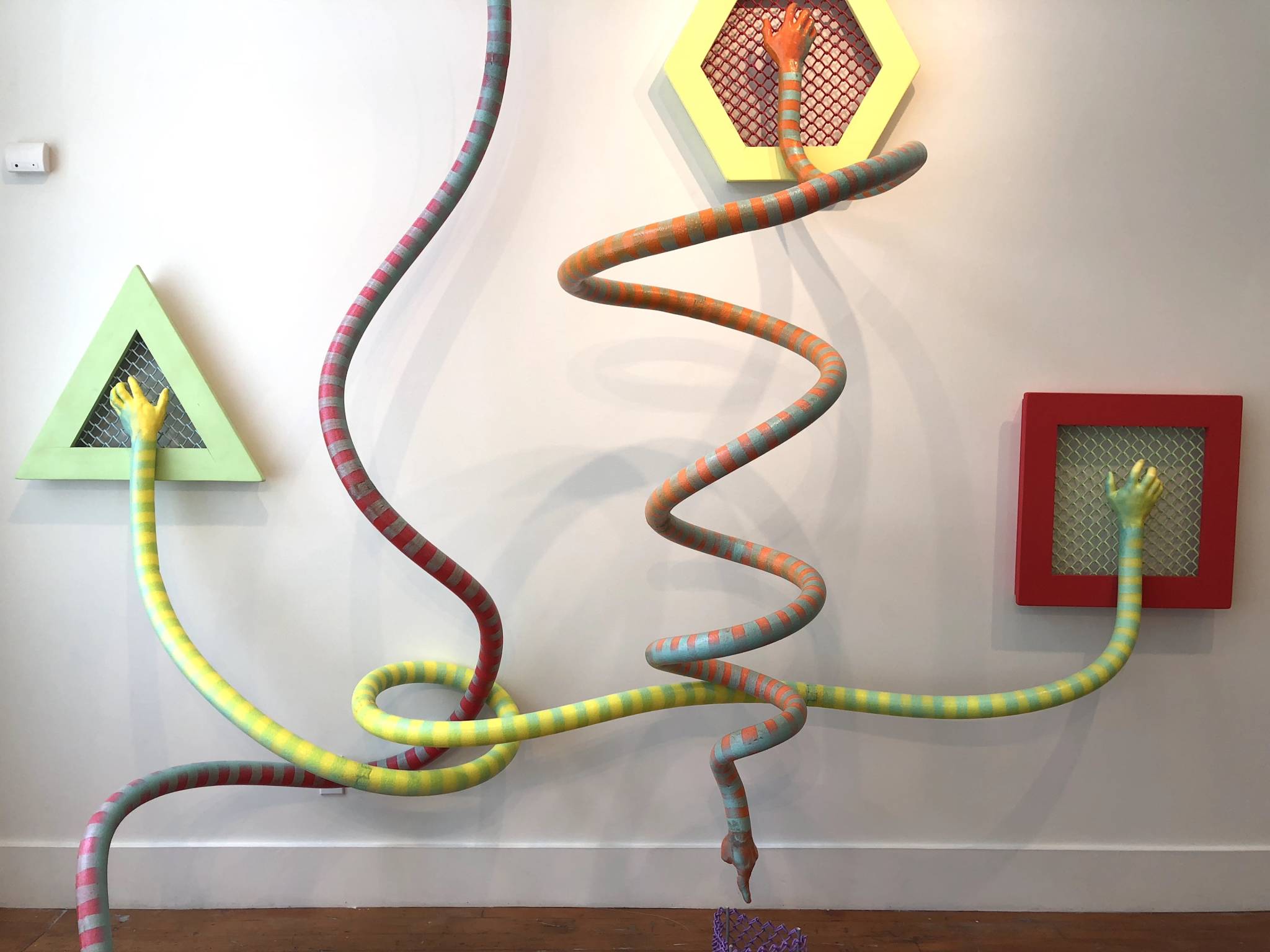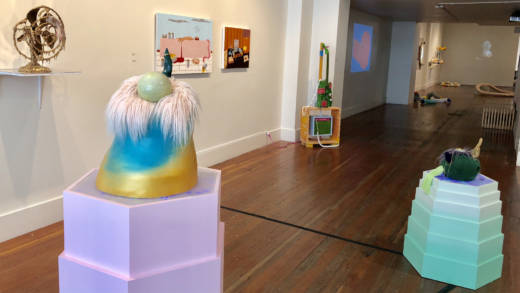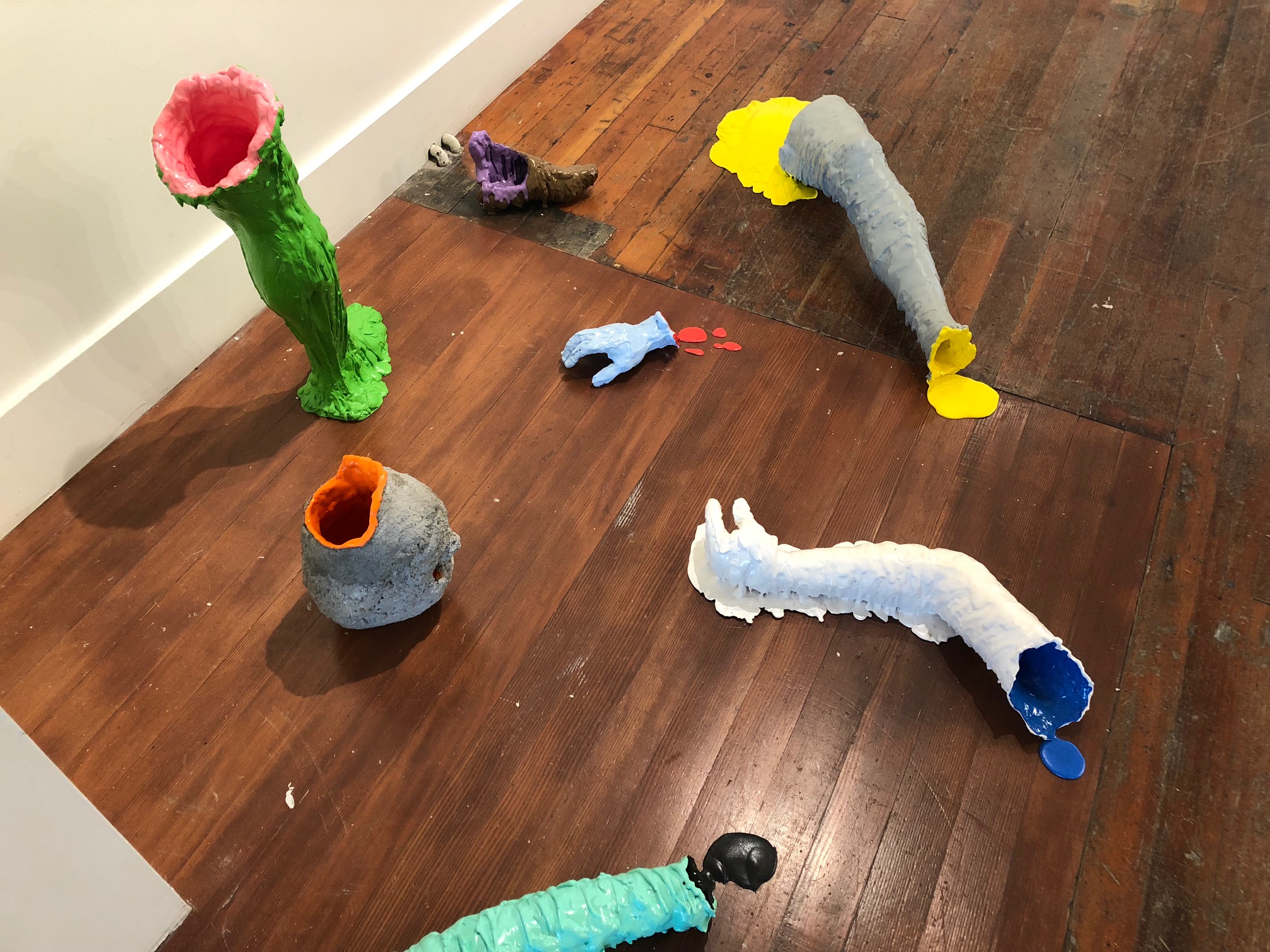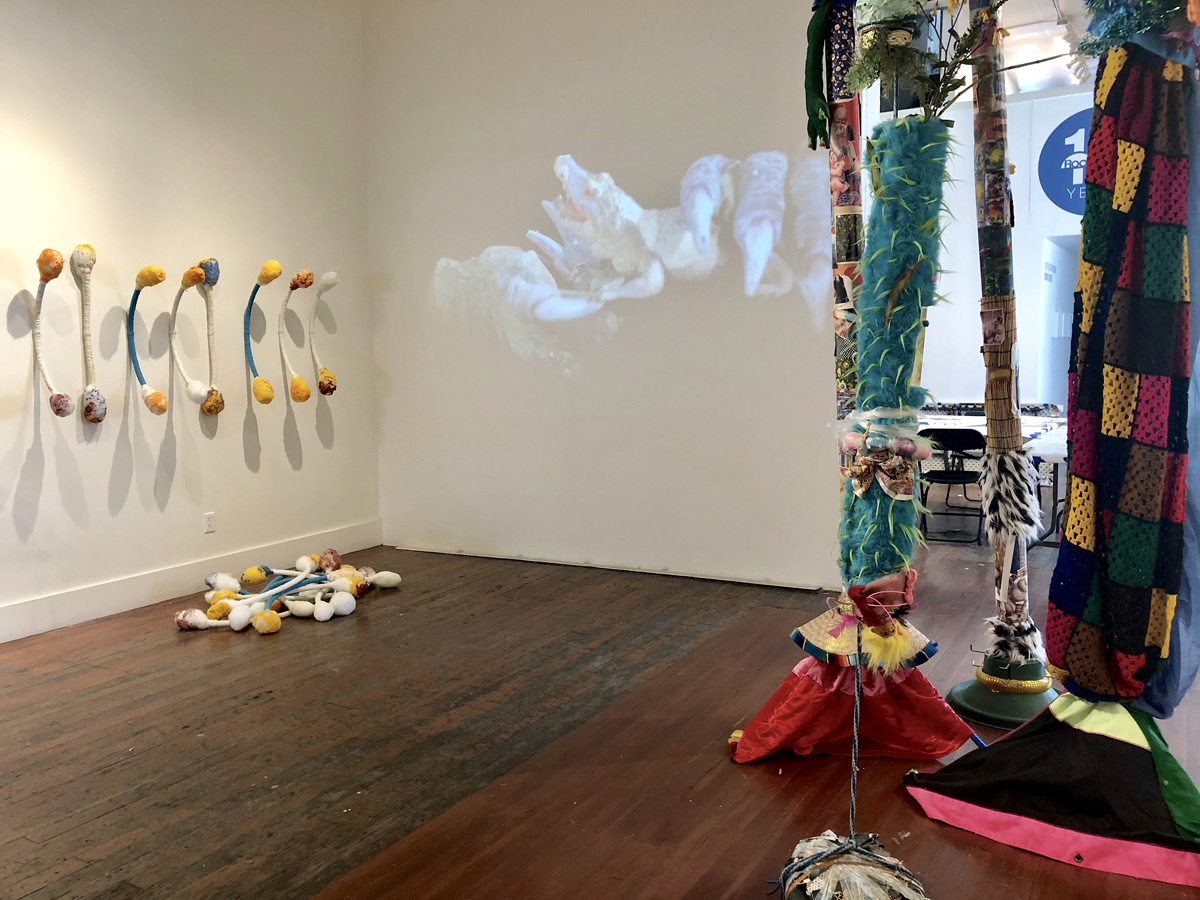Fifty-one years ago, the definition of Funk art was fairly synonymous with “hot mess.”
Peter Selz, director at the time of UC Berkeley’s University Art Museum, organized a 1967 show simply titled Funk, gathering artworks he described as irreverent in attitude, committed, bizarre, sensuous and “frequently quite ugly.” As if this “definition” wasn’t nebulous enough, the term Funk itself was borrowed from jazz, which necessitates an extra layer of explication to differentiate the visual art from the musical genre.
But Selz’s definitions of Funk, often positioned against the minimalist and finish-fetish work popular in New York and Los Angeles in the late ’60s, still hold true—at least for the collection of messy, weird, gooey and colorful artwork gathered at San Francisco’s Root Division for Funk Ain’t Dead, a group show curated by local ceramics artist Matt Goldberg.
Five decades after Funk, Goldberg finds the spiritual descendants of the movement-that-never-really-was in 21 Bay Area practitioners, demonstrating how contemporary work can exist under a moniker used so long ago—and why we still need that art.
While 21 artists sounds like a lot of work (it is), Root Division’s high-ceilinged Mission Street space accommodates the paintings, sculptures and videos of Funk Ain’t Dead without feeling overcrowded—a feat considering their aforementioned weirdness and gooey-ness.

The show opens with Santiago Insignares’ Tender Cage #3, a wall sculpture made out of foam tubes ending in cast hands and chain-link fencing boxed in by thick wooden frames. In his original exhibition essay, “Notes on Funk,” Selz wrote, “Funk art looks at things which traditionally were not meant to be looked at.” And sometimes those “things” are political. It’s impossible to see Insignares’ work without thinking of family detention centers; the one “cage” on the gallery’s floor holds a child’s toy truck.





